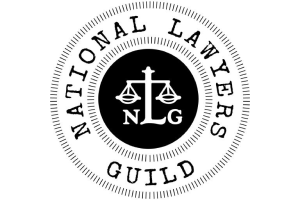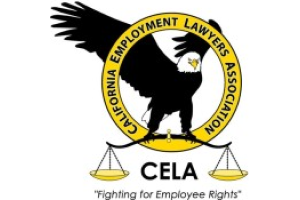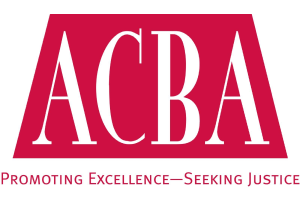Protecting Your Rights in the Workplace
The Abridged Encyclopedia Of Labor & Employment Law For Immigration Practitioners
Prepared for Seminar Presented to the
American Immigration Lawyers Association
2002-2003 Annual Conference
The Abridged Encyclopedia Of Labor & Employment Law
For Immigration Practitioners
Jody LeWitter
Siegel LeWitter Malkani
1939 Harrison Street, Suite 307
Oakland, CA 94612
(510) 452-5000
(510) 452-5004 (fax)
jlewitter@sl-employmentlaw.com
2002 AILA Conference
Labor Law for Immigration Practice
June 12, 2002
San Francisco, California
- INTRODUCTION
- There are myriads of labor & employment laws that cover employees working in the United States. This outline covers only those most likely to be encountered and provides a brief outline
- States often have parallel and supplementary statutes to the federal laws covered below
- TITLE VII: DISCRIMINATION BASED UPON VARIOUS PROTECTED CLASSIFICATIONS
- General Protected Statuses
- Title VII, 42 USC § 2000e et seq. prohibits discrimination against an employee or applicant based upon:
- Race
- Color
- Religion
- Sex
- National origin
- Retaliation for the exercise of rights under this act (anti-retaliation provision)
- National Origin Discrimination Prohibited
- National origin means “the country where a person was born, or more broadly, the country from which his or her ancestors came.” Espinoza v. Farah Manufacturing Company, Inc., 414 U.S. 86, 88 (1973)
- Prohibits discrimination based upon an individual’s or ancestor’s place of origin
- Prohibits discrimination “because an individual has the physical, cultural or linguistic characteristics of a national origin group.” 29 CFR § 1606.1
- National original discrimination is based on the employee’s objective appearance to others and such discrimination is prohibited if based on the country of birth or his/her membership in a collective nationality group. Bennun v. Rutgers State University, 941 F.2d 154, 171-173 (3rd Cir. 1991)
- Citizenship Discrimination Not Prohibited
- Title VII does not prohibit discrimination based upon alienage or citizenship per se. Espinoza v. Farah Manufacturing Company, Inc., 414 U.S. 86, 95 (1973)
- If citizenship or alienage has the purpose or effect of discriminating against an individual on the basis or national origin, it is prohibited by Title VII. 29 CFR § 1606.5
- Accent Discrimination
- Discrimination based upon “accent” per se illegal
- National origin discrimination forbids discrimination because the individual “has the linguistic characteristics of a national origin group.” 29 CFR § 1606.1; Berke v. Ohio Dept. Of Public Welfare, 628 F.2d 980, 981 (6th Cir. 1980)(per curium)
- Action because individual lacks communication skills permissible
- If the true reason for the adverse action is inability to adequately communicate in a job where communication is necessary, there is no discrimination. Fragante v. City & County of Honolulu, 888 F.2d 591 (9th Cir. 1998). See also, Rodriguez v. City of Hialeah, 716 F.Supp. 1425 (S.D. Fla. 1989)
- “An adverse employment decision may be predicated upon an individual’s accent when–but only when–it interferes materially with job performance.” Fragante, supra, at 596, fn. 11
- Failure to communicate as pretext for national origin discrimination
- Courts caution to take care that the failure to communicate is not used as a cover for national origin discrimination. Fragante, supra, at 596; 29 USC § 1606.6(b)(1)
- Discrimination based upon “accent” per se illegal
- English-Only Rules
- Requirement that employees speak “English-only” has been challenged as having a disparate impact on employees based upon their national origin
- English-only work rules upheld where employees bilingual and thus rule does not have significant adverse impact on employees. Garcia v. Spun Steak, 998 F.2d 1480 (9th Cir. 1993), cert. denied, 512 U.S. 1228 (1994)
- English-only work rule upheld with bilingual employee and motivation was not national origin but market for radio station. Jurado v. Eleven-Fifty Corp., 813 F.2d 1406 (9th Cir. 1987)
- English-only rule may violate Title VII where employees do not speak English. Burden shifts to employer to prove business necessity. EEOC v. Synchro-Start Products, Inc., 29 F.Supp. 2d 911 (N.D. Ill. 1999)
- Sex Discrimination, Pregnancy Discrimination, Sexual Harassment
- Sex discrimination by case law and statutory amendment, also covers sexual harassment and pregnancy discrimination
- Pregnancy, childbirth (or medical conditions related to the same) discrimination prohibited. 42 USC § 2000(e)(k)
- Must treat same as other persons similar in their ability or inability to work. 42 USC § 2000(e)(k); Lang v. Star Herald, 107 F.3d 1308 (8th Cir. 1997); 29 CFR § 1604.10(b).
- No leave at all or insufficient leave may constitute discrimination under a disparate impact theory. 29 CFR § 1604.10(c).
- State laws often regulate this area and provide specific leave of absences for pregnancy, birth and related disabilities
- Sex harassment prohibited as part-and-parcel of sexual discrimination
- Sexual harassment is harassment on the basis of sex
- Hostile Environment
- Must be so severe and pervasive as to alter the terms and conditions of employment and/or create an abusive working environment. Meritor Savings Bank v. Vinson, 477 U.S. 56 (1986)
- Can include unwanted touchings, verbal harassment or visual displays of offensive materials
- Quid Pro Quo Sexual Harassment
- Requirement or pressure for sexual favors or conduct as a “quid pro quo” for a job, its benefits or favorable treatment on the job. Meritor Savings, supra; Henson v. City of Dundee, 682 F.2d 897 (11th Cir. 1982)
- Who Responsible for the Conduct
- Employer liable if a supervisor
- If not a supervisor, employer liable if knew or should have known of the conduct
- Employer must take immediate and effective corrective action to prevent and/or remedy a hostile environment. The action may include discipline and/or termination if appropriate. Fuller v. City of Oakland, 47 F.3d 1522, 1528 (9th Cir. 1995); Intlekofer v. Turnage, 973 F.2d 773, 778 (9th Cir. 1992); Ellison v. Brady, 924 F.2d 872, 882 (9th Cir. 1991); 29 CFR § 1604.11(e), (f)
- Elements of Claim
- Hostile environment or quid pro quo
- Conduct unwelcome. 29 CFR § 1604.11(a), Meritor Savings, supra
- Hostile environment determined by standard of reasonable person or reasonable woman or reasonable person in plaintiff’s position
- Standard varies per court. Ellison, supra, at 881; Fuller, supra, at 1527, Steiner v. Showboat Operating Co. 25 F.3d 1459 (9th Cir. 1994) , cert. denied, 513 U.S. 1082(1995)
- Same Sex Sexual Harassment Prohibited. Oncale v. Sundowner Offshore Services, Inc., 523 U.S. 75 (1998)
- Gender Harassment Prohibited
- Smith v. Sheahan, 189 F.3d 529 (7th Cir. 1999)
- Ellerth/Faragher Affirmative Defense to Hostile Environment Claims
- The employer had a clear, effective and adequate policy and took reasonable prompt and effective action to prevent and correct a hostile environment; and
- The employee unreasonably failed to take advantage of the employer’s preventive and corrective remedies to avoid the harm. Burlington Industries, Inc. v. Ellerth, 524 U.S. 742 (1998); Faragher v. City of Boca Raton, 524 U.S. 775 (1998)
- Associational Discrimination Prohibited
- Case law prohibits discrimination due to the person’s “association” with someone of a protected classification
- No discrimination because person married to African-American. Parr v. Woodmen of World Life Ins. Co., 791 F.2d 888 (11th Cir. 1986)
- Discrimination Based upon Combination of Protected Factors Illegal
- This has become known as “race plus” or “sex plus” discrimination
- Cannot discriminate against someone based upon combination of race/national origin and sex. Lam v. University of Hawaii, 40 F.3d 1151 (9th Cir. 1994)
- Cannot discriminate against an African American woman. Jeffries v. Harris County Community Action Ass’n, 615 F.2d 1025, 1034 (5th Cir. 1980)
- Other types of Discrimination
- Other types of discrimination not prohibited by federal law include sexual orientation and marital status discrimination
- State laws may prohibit such discrimination
- Title VII, 42 USC § 2000e et seq. prohibits discrimination against an employee or applicant based upon:
- Types of Discriminatory Actions Prohibited: Unlawful Practices
- No discrimination in the “terms and conditions” of employment
- Termination and failure to hire. 42 USC § 2000e-2(a)(1)
- Compensation such as benefits and pay. 42 USC § 2000e-2(a)(1)
- Other “terms, conditions or privileges of employment.” 42 USC § 2000e-2(a)(1)
- No Retaliation
- Opposition Clause
- An employer may not discriminate against an employee for opposing any practice prohibited by the act. 42 USC § 2000e-3(a)
- Participation Clause
- An employer may not discriminate against an employee for making a charge, testifying, assisting, or participating in an investigation, proceeding or hearing under this act. 42 USC § 2000e-3(a)
- An Employee Need not be Correct in His/Her Protest or Participation
- An employee must oppose the practice both subjectively (in good faith) and objectively (reasonably) Gifford v. Atchison Topeka & Santa Fe. Ry., 685 F.2d 1149 (9th Cir. 1982)
- A mistaken belief that discrimination is occurring can be enough. Sias v. City Demonstration Agency, 588 F. 2d 692 (9th Cir. 1978); Rucker v. Higher Educational Aids Board, 669 F.2d 1179, 1182 (7th Cir. 1982)
- The Retaliatory Action Must be an Adverse Employment Action
- Adverse actions include demotions, suspensions, failure to give equal consideration in making employment decisions adversely affecting working conditions or otherwise denying employment benefits. Gunnell v. Utah Valley State College, 152 F.3d 1253, 1264 (10th Cir. 1998)
- Opposition Clause
- No Harassment
- The case law mandating no harassment based upon sex is fairly well developed. See § II(A)(5), supra
- The case law prohibiting harassment based upon other statuses, such as race, national origin, religion, etc. is developing
- Race and national origin harassment prohibited. Rogers v. EEOC, 454 F.2d 234, 236 (5th Cir. 1971), cert. denied, 406 U.S. 957 (1972), Firefighters for Racial Equality v. City of St. Louis, 549 F.2d 506 (8th Cir. 1977); Daniels v. Essex Group, Inc., 937 F.2d 1264, 1274, n.4 (7th Cir. 1991)
- Religious harassment. Weiss v. U.S., 595 F.Supp. 1050, 1053 (E.D. Va. 1984); Compston v. Borden, Inc., 424 F.Supp. 157 (S.D. Ohio 1976)
- EEOC regulations prohibit harassment based upon sex, race, color, religion and national origin. 29 USC § 1604.11(a)
- Methods of Proving Discrimination
- Two Theories to Prove Discrimination
- Disparate treatment/intentional discrimination
- Direct, circumstantial and/or statistical evidence may be used
- Need not be sole factor, discrimination established if the protected status was a motivating factor… “even though other factors also motivated the practice.” 42 USC § 2000e-2(m)
- Disparate Impact
- A facially neutral employment practice or policy which has an adverse impact on a protected classification; Griggs v. Duke Power Co., 401 U.S. 424 (1971)
- Typically proven by statistical evidence
- Disparate treatment/intentional discrimination
- Two Theories to Prove Discrimination
- No discrimination in the “terms and conditions” of employment
- Entities Subject to Title VII
- Covered entities include employers, employment agencies, labor organizations and joint labor-management committees controlling job training programs. 42 USC § 2000e-2(a)-(d)
- Employers
- Must have 15 employees or more for each working day in each of 20 or more calendar weeks in the current or preceding year. 42 USC § 2000e(b)
- Agents of an employer. 42 USC § 2000e(b)
- Joint employers where the joint employers have a requisite amount of control over the employees
- Situations involving temporary personnel placed by an agency may be included. Amarnare v. Merrill Lynch, Pierce, Fenner & Smith, Inc., 611 F.Supp. 344 (S.D. NY 1981)
- Parent corporation where the parent and subsidiary are operated as an integrated enterprise. Morgan v. Safeway Stores, Inc., 884 F.2d 1211, 1214 (9th Cir. 1989)
- Foreign employers operating in the United States are generally covered
- Treated as all other employers. See generally, Morelli v. Cedel, 141 F.3d 39, 43 (2nd Cir. 1998)
- Some treaties with foreign countries may permit foreign employers, under some circumstances, to legally prefer citizens of their own country over U.S. citizens. Sumitomo Shoji America, Inc. v. Avagliano, 457 U.S. 176, 183 (1982)
- Some employers may argue that citizenship is a bona fide occupational qualification for a particular job. Sumitomo Shoji America, Inc. v. Avagliano, 457 U.S. 176, 189-190, fn. 19 (1982)
- Federal employees covered
- Separate procedures and provisions apply. 42 USC § 2000e-16
- Employees Covered by Title VII
- Employees
- Employees include former employees. Robinson v. Shell Oil. Co., 519 U.S. 337, 345-346 (1997)
- Does not include independent contractors
- Partners may be included depending upon the circumstances. Strother v. Southern California Permanente Medical Group, 79 F.3d 859 (9th Cir. 1996); Simpson v. Ernst Young, 100 F.3d 436 (6th Cir. 1996)
- Employees in Foreign Countries
- If an employee works in a foreign country for a United States corporation, Title VII protects the employee. 42 USC § 20002-1(b), (c)
- Job Applicants
- Job Applicants are covered. 42 USC § 2000e-2(a)
- This may include job testers. Kyles v. J.K. Guardian Security Services, Inc., 222 F.3d 289 (7th Cir. 2000)
- Foreign Citizens Working in the U.S.
- Legally employed foreign citizens are covered. Espinoza v. Farah Manufacturing Company, Inc., 414 U.S. 86, 95 (1973)
- Unclear if aliens who do not have permission to legally work in the United States are covered
- One case has held they are not covered. Egbuna v. Time-Life Libraries, Inc., 153 F.3d 184, 188 (4th Cir. 1998), cert. denied 525 U.S. 1142 (1999)
- Other cases are contrary. EEOC v. Hacienda Hotel, 881 F.2d 1504, 1516-17 (9th Cir. 1989). See also, Rios v. Enterprise Assoc. Steamfitters, 860 F.2d 1168, (2nd Cir. 1988)
- Employees
- General Protected Statuses
- AGE DISCRIMINATION IN EMPLOYMENT ACT, 29 USC § 621 ET. SEQ.
- Much of this Act tracks Title VII
- Discrimination Protected Against
- No discrimination against employees 40 years or older in favor of younger employees. 29 USC § 631(a); Hamilton v. Caterpillar Inc., 966 F.2d 1266 (7th Cir. 1992)
- Does not protect younger employees
- Does not protect employees under 40 even if discriminated against in favor of older younger employees
- Does not protect “Bona Fide Executives” or “High Policy Makers”
- These employees can be subject to a policy of retirement at age 65 years. 29 USC § 623(d)
- Certain requirements must be met regarding time served in the position and retirement benefits. 29 USC § 631(c)(1)
- Types of Discriminatory Actions Prohibited
- No discrimination in the terms and conditions of employment
- Termination and failure to hire. 29 USC § 623(a)
- Compensation such as benefits and pay. 29 USC § 623(a)
- Discrimination in any other “terms, conditions or privileges of employment.” 29 USC § 623(a)
- Reduction of wages of any employee to comply with the ADEA. 29 USC § 623(a)
- No Retaliation
- Opposition Clause
- An employer may not discriminate against an employee for opposing any practice prohibited by the act. 29 USC § 623(d)
- Participation Clause
- An employer may not discriminate against an employee for participating in a charge of discrimination under the ADEA. 29 USC § 623(d)
- Other requirements for retaliation claims are similar to Title VII, and thus, see § II(B)(2), supra
- Opposition Clause
- No Harassment Due to Age
- There is little law in this area under the ADEA
- Some circuits have held that the ADEA prohibits age harassment. Crawford v. Medina Gen. Hops., 96 F.3d 830 (6th Cir. 1996); Kelewoe v. Jim Meagher Chevrolet, Inc., 952 F.2d 1052 (8th Cir. 1992)
- No discrimination in the terms and conditions of employment
- Entities Subject to the ADEA
- Employers with 20 or more employees
- Number of employees measured by each work day in each of 20 or more calendar weeks in current or proceeding calendar years. 29 USC § 630(b)
- Agents of Employers. 29 USC § 630(b)
- The United States government is not covered. 29 USC § 630(b)
- States are not covered
- The Supreme Court held that although the statute purports to cover states, the provision is in violation of the Eleventh Amendment. Kimel v. Fla. Board of Regents, 528 U.S. 62 (2000)
- Foreign Employers Operating in the United States are generally covered
- Treated as all other employers. Morelli v. Cedel, 141 F.3d 39, 43 (2nd Cir. 1998)
- Employers with 20 or more employees
- Persons Covered by the ADEA
- Employees
- Employees include former employees. Robinson v. Shell Oil. Co., 519 U.S. 337, 345-346 (1997)
- This does not cover independent contractors
- “Partners” may or may not be considered employees
- Whether they are employees or partners depends upon a number of factors such as whether they control the business, vote, undertake financial risks etc., Caruso v. Peat, Marwick, 664 F.Supp. 144 (S.D. N.Y. 1987)
- Employees in Foreign Countries
- If an employee works in a foreign country for a United States corporation, they are generally covered. 29 USC § 630(f)
- Job Applicants
- ADEA protects “any individual” and includes discrimination in hiring. 29 USC § 623(a)(1)
- Applicants from outside the U.S. are not covered. Reyes- Gaona v. N. Carolina Growers Ass’n, 250 F.3d 861 (4th Cir. 2001)
- Elected officials and staff are not covered. 29 USC § 630(f)
- Foreign nationals working in the United States are covered
- Employees
- Methods of Proving Discrimination under the ADEA
- Similar to Title VII claims, so see § II(B)(4), supra
- There is a split in the circuits regarding whether a disparate impact violates the ADEA
- The U.S. Supreme Court hasn’t decided this question. Hazen Paper Co. V. Biggins, 507 U.S. 604, 610 (1993).
- The Circuits are split
- Salary Costs
- Not necessarily illegal to terminate employee whose salary is higher, and who happens to be older. Hazen Paper Co. v. Biggins, 507 U.S. 601 (1993)
- Practice may be illegal under state law
- OLDER WORKERS BENEFIT PROTECTION ACT (OWBPA)
- Background
- The OWBPA was passed as an amendment to the ADEA in 1990
- The OWBPA governs benefit plans for older individuals
- The OWBPA governs requirements for employees’ waiver of rights under the ADEA
- Waiver of Rights
- Cannot waive rights under the ADEA unless the waiver is “knowing” and “voluntary”
- Burden of proof is on the employer. 29 USC § 626(F)(3)
- Factors such as combination of pressure to sign and limited ability to speak English probably makes signature not knowing and voluntary
- Specific Factors Required in Written Waiver
- Must be written agreement
- Must be reasonably comprehensible. 29 USC § 626(f)(1)(A)
- Must specifically waive rights under the ADEA. 29 USC § 626(f)(1)(B)
- Must not waiver unknown future claims. 29 USC § 626(f)(1)(C)
- Consideration required. 29 USC § 626(f)(1)(D)
- Must advise employee in writing, to consult attorney. 29 USC § 626(f)(1)(E)
- Class waivers require additional factors. 29 USC § 626(f)(1)(f)
- Timing Requirement
- Employees must normally be given 21 days to review and sign agreement. 29 USC § 626(f)(1)(E)
- 45 days with class of employees. 29 USC § 626(f)(1)(f)
- 7 days for revocation mandatory. 29 USC § 626(f)(1)(G)
- If a waiver involves an age discrimination claim filed with EEOC or in court, these specific time limits do not apply
- Must be “reasonable” time. 29 USC § 626(f)(2)
- Same time as above would probably be considered reasonable
- Some factors could shorten the time frame, such as obtaining legal counsel
- Cannot waive rights under the ADEA unless the waiver is “knowing” and “voluntary”
- Background
- AMERICANS WITH DISABILITIES ACT (ADA), 42 USC § 12101 ET. SEQ.
- Introduction
- Illegal to discriminate against a qualified person with a disability; a record of the same, or regarded as having an impairment.
- No retaliation
- Definition of a Disability
- Physical or Mental Impairment 42 USC § 12102(A)(2)
- Physical impairments include physiological disorders, neurological, musculoskeletal, etc. See, 29 CFR § 1630.2(h)
- Mental impairments include mental or psychological disorders such as mental retardation, organic brain damage, mental illness and some learning disorders. 29 CFR § 1630.2(h)(2)
- There are special rules for alcoholism and drug addiction, which can be disabilities, but they do not protect against current abuse of alcohol or drugs that result in inability to do the job. 42 USC § 12114(a); 29 CFR § 1630.2(h)
- Current use of illegal drugs is not protected. 42 USC § 12111(6)(A)
- Specific exclusion
- Compulsive gambling, kleptomania, pyromania, homosexuality, bisexuality, transexualism, pedophilia, etc. 42 USC § 12221 (a), (b)
- Must Substantially limits a Major Life Activity. 42 USC § 12102(A)(2)
- Major life activities include manual tasks, caring for oneself, walking, seeing, hearing, speaking, breathing, sitting, standing, lifting, reaching, learning, working, eating, interaction with others, sleeping and reproduction. 29 CFR § 1630.2(I)
- This definition is not exhaustive and should be broadly construed. Bragdon v. Abbott, 524 U.S. 624 (1998)
- If the major activity is work, this requires a significant restriction in the ability to perform a broad range or class of jobs. 29 CFR § 1630.2(j); Sutton v. United Airlines, Inc., 527 U.S. 471, 491 (1999)
- A substantial limitation in performing a manual task is one which severely restricts the individual from doing a variety of activities of central importance to most people’s daily lives. Toyota Motors Mfg. v. Williams, 122 S.Ct. 686, 691 (2001)
- The inpairment must be long term or permanent Toyota Motors Mfg. v. Williams, 122 S.Ct. 681 (2001)
- Must take account of the effect of corrective or mitigating measure. Sutton v. United Airlines, Inc., 527 U.S. 471, 482-483 (1999)
- Major life activities include manual tasks, caring for oneself, walking, seeing, hearing, speaking, breathing, sitting, standing, lifting, reaching, learning, working, eating, interaction with others, sleeping and reproduction. 29 CFR § 1630.2(I)
- Physical or Mental Impairment 42 USC § 12102(A)(2)
- Duty to Reasonably Accommodate
- A reasonable accommodation must be provided unless it creates an undue hardship. 42 USC § 12112(b)(5)
- Burden is on the employer to prove the undue hardship. McAlindin v. County of San Diego, 192 F.3d 1226 (9th Cir. 1999)
- This is an ongoing duty
- McAlindin v. County of San Diego, 192 F.3d 1226 (9th Cir. 1999); Humphrey v. Memorial Hospital Ass’n., 239 F.3d 1128 (9th Cir. 2001), petition for cert. filed, 69 U.S. L.W. 3792 (June 13, 2001)(No. 00-1860)
- Must engage in “interactive process”
- Requires give-and-take and discussion of options or informal interactive process. Barnett v. U.S. Air, Inc., 228 F.3d 1105 (9th Cir. 2000), cert. granted in part sub nom., U.S. Airways v. Barnett, 528 U.S. 970 (2001); Humphrey v. Memorial Hospital Ass’n., 239 F.3d 1128 (9th Cir. 2001), petition for cert. filed, 69 U.S. L.W. 3792 (June 13, 2001)(No. 00-1860)
- Examples of reasonable accommodations
- Physical changes such as changes to facilities. 42 USC § 12111(9)(A)
- Changes in hours, job duties, or assistance with some job tasks, job restructuring, part time or modified work schedules. 42 USC § 12111(9)(B); 29 CFR § 1630.2(o)(2)(ii)
- Leave of absence, transfer or reassignment. 42 USC § 12111(9)(B)
- Does not generally require bumping another employee
- Depending on the job, it may require working from home. Humphrey v. Memorial Hosps. Ass’n, supra
- A reasonable accommodation must be provided unless it creates an undue hardship. 42 USC § 12112(b)(5)
- Prohibited Actions
- Discrimination in hiring, advancement, termination, compensation, job training. 42 USC § 12112(a)
- Discrimination i n other terms, conditions and privileges of employment. 42 USC § 12112(a)
- Failure to reasonably accommodate the individual. See, § V(B)
- Harassment based upon disability. Fox v. General Motors Corp., 247 F.3d 169 (4th Cir. 2001); Flowers v. Southern Regional Physicians Services, Inc., 247 F.3d 229 (5th Cir. 2001)
- Preemployment activities
- No preemployment medical examination
- May offer job subject to relevant and appropriate medical examination that is required of all employees. 42 USC § 12112(d)(2)(A)
- No questions regarding disabilities
- May ask about ability to perform the job. 42 USC §12112(d)(2)
- May follow up if employee discusses accommodations
- No preemployment medical examination
- No retaliation
- Opposition clause. 42 USC § 12203
- Participatory clause. 42 USC § 12203
- Need not be disabled to assert a claim under this section. 42 USC § 12203(a); Soileau v. Guilford of Maine, Inc., 105 F.3d 12 (1st Cir. 1997)
- Covered Entities
- Scheme is same as Title VII, See § II(C), supra
- Does not include the federal government
- The Rehabilitation Act of 1973, which has a similar statutory scheme, does apply. 29 USC § 701 et seq.
- Persons covered
- “Qualified” individuals with disability 42 USC § 12112(a)
- Capable of performing the essential functions of the job
- With or without a reasonable accommodation
- “Qualified” individuals with disability 42 USC § 12112(a)
- Introduction
- FAMILY AND MEDICAL LEAVE ACT (FMLA)
- Family Leave Permitted
- Up to 12 weeks per year. 29 USC §§ 2601, 2612(a)(1)
- Can limit if both parents work for same employer under some circumstances. 29 USC §§ 2601, 2612(f); 29 CFR § 825.202(a)
- Employer can define company-wide the year. 29 CFR § 825.200(b)
- Failure to do so results in employee choosing time period. 29 CFR § 825.200(e)
- Measure 12 weeks from time leave first taken
- Intermittent and Part Time Leave Permitted. 29 CFR § 828.203 et seq.
- Must be medically necessary. 29 CFR § 2612(b)
- To care for child permitted, but requires employer agreement. 29 USC § 2612(b)(1)
- An alternative but comparable position may be assigned if it better accommodates the need for leave. 29 USC § 2612(b)(2)
- Equal pay and benefits required. 29 CFR § 825.204(c)
- Leave is unpaid. 29 CFR § 825.207(a) et seq.
- May use other paid leave or vacation. 29 CFR § 825.207(a); 29 CFR § 825.207(e)
- Benefits must continue. 29 CFR § 825.209(b)
- Employee may generally be charged the expense. 29 CFR § 825.210(c)
- Up to 12 weeks per year. 29 USC §§ 2601, 2612(a)(1)
- When Family Leave Permitted
- Serious health condition
- Illness, injury or impairment. 29 USC § 2611(11)
- Inpatient care (hospital, hospice, residential medical care facility) or
- One night enough. 29 CFR § 825.114(a)(2)(i)
- Continuous treatment by a medical care provider. 29 USC § 2611(11)
- Incapacitated for three consecutive days. 29 USC § 825.114(a)(2)(i)
- Treatment two or more times or
- One treatment that involves continuous supervision 29 USC § 825.114(a)(2)(i)
- May involve episodic incapacity. 29 USC § 825.114(a)(2)(iii)
- Incapacitated for three consecutive days. 29 USC § 825.114(a)(2)(i)
- Birth of, and care for, child
- Either parent can take such leave. 29 CFR § 825.112(b)
- Must take within year of birth. 29 CFR § 825.201
- Adoptions and foster care included. 29 CFR § 825.201
- Serious health condition
- Who must suffer Serious Health Conditions
- Employee
- Employee
- Child must be either under 18 years or unable to care for him/herself. 29 USC § 2611(12); 29 CFR § 825.113(c)
- Must take leave to care for the person
- Family member unable to care for basic medical needs or unable to get to health care provider. 29 CFR § 825.116(a)
- Can include psychological support
- Act as caretaker or make arrangements for care. 29 CFR § 825.116(b)
- Still must have serious health condition
- Employers Covered
- Number of emp loyees required
- Fifty employees
- Fifty employees within 75 miles of geographic location of employee requesting leave. 29 CFR § 825.110
- Each working day during any 20 or more weeks in current or past year. 29 USC § 2611(4)(A)(i), 29 CFR § 825.105(f)
- Per employer
- Includes joint or integrated employers. 29 CFR §§ 825.104, 825.106
- Fifty employees
- Number of emp loyees required
- Employees Covered
- Employed for 12 months and 1250 hours during the 12 months
- If not eligible, may still be able to sue for retaliation or discrimination. Butler v. Owens-Brockway Plastic Products, Inc., 199 F.3d 314 (6th Cir. 1999); Duckworth v. Pratt & Whitney, 152 F.3d 1 (1st Cir. 1998)
- Requests for Leave, and Notification by Employer and Employee
- Employer may request medical certification. 29 USC § 2613(a); 29 CFR § 825.305(a)
- Generally done within two business days. 29 CFR § 825.301(b)(1)
- Return-to-work certification may also be required. 29 CFR § 825.310(a); 29 USC § 2614(a)(4)
- Employer may demand second opinion. 29 USC § 2613(c)(1), 29 CFR § 825.307(a)(2)
- Employer to pay cost
- Third opinion can be demanded at employer’s expense. 29 USC § 2613(d); 29 CFR § 825.307(c)
- Notice
- Employer must post notification of rights to family leave. 29 CFR § 825.300 et seq.
- Must keep records
- If an employer fails to inform an employee of whether the employer counts the leave as FMLA leave, and it results in prejudice to the employee, the employer may violate the Act. Ragsdale v. Wolverine Worldwide, Inc., 122 S.Ct. 1155 (2002)
- Employee to give notice of need for leave. 29 USC 2612(e)
- Need not use buzz word of “FMLA”
- Should let employer deduce that FMLA leave implicated. 29 CFR §§ 825.208(a)(2); 825.302, 825.303
- Reasonable notice if possible. 29 USC § 2612(e)
- Employer must post notification of rights to family leave. 29 CFR § 825.300 et seq.
- Employer may request medical certification. 29 USC § 2613(a); 29 CFR § 825.305(a)
- No Retribution for Taking Leave or Asserting Rights
- FMLA protected leave cannot be used for disciplinary purposes
- No retaliation or discrimination
- For taking a FMLA leave
- For opposing violations of FMLA 29 USC § 2615(a)(2); 29 CFR § 825.220(a); Bachelder v. America West Airlines, 259 F.3d 1112 (9th Cir. 2001)
- For participating in the FMLA complaint procedure. 29 USC § 2615(b); 29 CFR § 825.220(a)
- No interference with employee’s exercise of rights or denial of rights. 29 USC § 2615(a)(1); 29 CFR § 825.220(a)(1)
- Employer’s motive generally held irrelevant. Hodgens v. General Dynamics Corp., 144 F.3d 151 (1st Cir. 1998); King v. Preferred Technical Group, 166 F.3d 887 (7th Cir. 1999)
- Right to Reinstatement
- Same or equivalent position. 29 USC § 2614(a)(1)
- No better or worse position than other employees
- Layoff or other conditions. 29 CFR § 825.216(a)
- Key employee need not be reinstated
- Those earning top 10% of pay for employees within 75 miles. 29 CFR § 825.217, and
- Would result in substantial and grievous economic injury. 29 USC § 2614(b)(1)(A); 29 CFR § 825.218(a)
- Family Leave Permitted
- OTHER RELEVANT STATUTES
- There are a Variety of Equally Important Federal Laws Not Covered in this Outline
- National Labor Relations Act (NLRA), 29 USC § 141, et seq.
- Governs relationship between private employers and unions
- Guarantees right of employees to organize and bargain collectively with their employer
- Determine election or non-election of labor unions
- Determines appropriate units for collective bargaining
- Covered employers
- Private employers
- Excludes airlines, railroads, agriculture, government
- Governs the election process for union elections
- Governs Unfair Labor Practices (ULP) by employers and unions. 29 USC § 158 et seq.
- ULP for an employer to interfere with, restrain or coerce employees in their exercise of their rights under the NLRA. 29 USC § 158(a)(1), (3)
- ULP for an employer to report undocumented employees to the INS in retaliation for the employees engaging in protected union-organizing activities. Sure-Tan v. NLRB, 467 U.S. 883 (1984)
- Generally governs the collective bargaining process
- Usually results in a collective bargaining agreement (CBA) between employer and employee
- CBA usually contains important terms and agreements
- Wages and benefits
- Termination and discipline provisions such as just cause for termination and progressive discipline
- Sets up a dispute resolution system and various levels of appeals usually ending in an arbitration
- Employee Retirement Income Security Act (ERISA), 29 USC § 1001 et seq.
- Governs employees benefit plans
- Contains limited jurisdiction and remedies
- Federal Court only
- No jury trial
- No compensatory or punitive damages
- Fair Labors Standards Act (FLSA), 29 USC § 201 et. Seq.
- Sets federal minimum wage
- Establishes rules for overtime including when available, types of employees entitled to overtime, and rates
- Worker Adjustment & Retraining Notification Act ,(WARN), 29 USC § 2101 et seq.
- Covers employers with 100 employees as defined by statute. 29 USC § 2101(a)(1)
- Requires 60 day notice for layoffs effecting 50 employees laid off within 30 days
- Equal Pay Act (EPA), 29 USC § 206 et seq.
- Governs equal pay for equal work based upon sex
- Immigration Reform & Control Act (IRCA)
- Prohibits employers from hiring persons without proper employment eligibility documents (unauthorized aliens)
- Prohibits discrimination against employees and applicants based upon national origin or citizenship
- Does not protect unauthorized aliens
- Does not cover those protected by Title VII. 8 USC § 1324b(a)(2)(B)
- Prohibits intimidation and retaliation. 8 USC § 13246(a)(5); 28 CFR § 44.201








